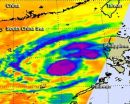While the cancer research community has seen many significant therapeutic advances over the last decade, only recently have investigators identified how patients' individual genetic makeup influences their short- and long-term response to therapy, demonstrating that while the disease may respond positively to therapy, the patient may not. Current studies take these insights a step further, examining specific patient subpopulations to determine their risk for negative outcomes and whether early preventive interventions or treatment adjustments may help avoid treatment-related toxicity.
"Data presented today offer important insights into how and why patients respond to blood cancer treatment," said William G. Woods, MD, moderator of the press conference, Pediatric Hematology/Oncology Director, and the Daniel P. Amos Children's Chair of the Aflac Cancer Center and Blood Disorders Service at Children's Healthcare of Atlanta. "Findings from these studies help further support the notion of one day personalizing cancer treatment to the individual, rather than to the disease, to improve survival and reduce toxicity."
This press conference will take place on Saturday, December 8, 2012, at 10:00 a.m. EST.
WT1 SNP rs16754 Genotype Predicts Treatment Related Mortality (TRM) in African-American and Asian Pediatric AML Patients: A Report From the Children's Oncology Group[Abstract 1385]
New research suggests that the presence of a specific genetic marker, known as WT1 SNP rs16754, may be associated with reduced toxicity from chemotherapy in African-American and Asian children with acute myeloid leukemia (AML).
AML, the second most common form of leukemia in children, is a blood cancer in which the bone marrow makes a large number of abnormal white blood cells that crowd out other healthy blood cells over time, leading to infection, anemia, or excessive bleeding. Although 60 to 70 percent of children with AML achieve long-term remission after treatment with multi-agent chemotherapy, the treatment-related mortality (TRM) associated with this intensive treatment regimen remains a major concern for this patient population. Recently, researchers have developed models that use sophisticated genome sequencing techniques to better understand how patients' genetic makeup may influence their risk of TRM.
The WT1 gene, a tumor suppressor that regulates cell growth, can be subject to "loss-of-function" mutations that lead to the development of AML. Unlike genetic mutations, single-nucleotide polymorphisms (SNPs, naturally occurring variations in the DNA that determine an individual's unique genetic makeup) are not typically thought to play a role in leukemia development or treatment response. However, researchers recently discovered that the presence of SNP rs16754 in the WT1 gene is correlated with improved outcomes in pediatric patients with AML. Based on the fact that the frequency of SNP rs16754 varies by race, researchers assessed the effect of this SNP on outcomes in specific ethnic patient groups.
To determine if the presence of SNP rs16754 affected survival, remission, relapse risk, and TRM in pediatric AML patients of different ethnicities, a team of investigators analyzed the DNA of 492 children with AML enrolled in the CCG-2961 protocol, a Phase III Children's Cancer Group trial. The intensive treatment regimen delivered to patients during CCG-2961 allowed researchers to study the effects of ethnicity on patient outcome, while minimizing non-biological influences such as access to care or oral medication compliance. Of the 492 patients, 138 (28%) had the SNP rs16754 (SNP+). After stratifying the patients by ethnicity, the investigators found that the presence of SNP rs16754 varied by race, with 53 percent of Asians, 34 percent of Hispanics, 25 percent of Caucasians, and 21 percent of African Americans carrying the genetic variation. The SNP+ patients had higher five-year overall survival rates than those without the variation (SNP-) (61% vs. 44%). Within each racial subgroup, the five-year overall survival rate was higher in the SNP+ patients.
Although survival improvements in leukemia clinical trials are often attributed to increased remission rates or decreased relapse, remission and relapse rates did not differ significantly between SNP+ and SNP- patients in this study. The investigators examined whether the SNP had any association with TRM and found that TRM rates did not differ by SNP rs16754 genotype when all ethnicities were considered together. However, TRM rates in SNP+ African-American and Asian patients, when taken together, were significantly lower than in SNP- patients of those two ethnicities. African-American and Asian patients without SNP rs16754 had significantly higher rates of treatment-related toxic death compared to SNP+ patients (African-American: 25% vs. 0%; Asian: 43% vs. 0%). These results suggest that the protective effect of the presence of SNP rs16754 in reducing chemotherapy-related toxicity in pediatric AML patients is more pronounced in those of African-American and Asian descent.
"Identifying the patient-specific factors that can affect responses to treatment in different patients with the same disease brings us closer to our goal of designing personalized treatments that provide the most therapeutic benefit with the least amount of toxicity to these children," said Phoenix Ho, MD, lead author and Attending Physician at Seattle Children's Hospital in the Division of Pediatric Hematology/Oncology at the University of Washington School of Medicine and Research Associate at the Fred Hutchinson Cancer Research Center in Seattle. "Our analysis was conducted on a trial completed in 2002, and treatment protocols for pediatric AML have evolved since that time. Our next step is to validate our findings by studying this same association in contemporary trials. We are also designing studies to uncover the mechanism behind the association between the SNP and reduced toxicity, with the hope of translating these findings into improved treatments for pediatric AML."
Dr. Ho will present this study in a poster presentation on Saturday, December 8, at 5:30 p.m. EST at the Georgia World Congress Center in Hall B1-B2, Level 1, Building B.
Genetic Susceptibility to Anthracycline-Related Congestive Heart Failure (CHF) in Survivors of Hematopoietic Cell Transplantation (HCT)[Abstract 589]
Researchers have identified specific genetic factors that are associated with heart failure in patients who have undergone hematopoietic stem cell transplantation (HCT) for blood cancer.
The transplantation of blood-forming stem cells from the bone marrow, circulating blood, or umbilical cord blood is the primary treatment option for many patients with blood cancer who relapse after receiving standard front-line therapies. During the transplant, healthy stem cells replace damaged cells that caused the illness, effectively curing patients of their disease. Advances in transplant strategies have led to a growing number of long-term survivors of HCT. However, this growing population of survivors is at risk for developing life-threatening complications such as congestive heart failure, due in large part to their exposure to pre-HCT treatments with a class of chemotherapy drugs called anthracyclines. Transplant survivors tend to develop heart failure earlier than the general population, and the overall survival rate following diagnosis is less than 50 percent.
By analyzing transplant patient demographics such as age and gender, treatment strategy (i.e., pre-HCT chemotherapy and chest radiation), and presence of cardiovascular risk factors such as high blood pressure, diabetes, and high cholesterol, researchers have been able to create a clinical profile to determine which patients are likely to develop heart failure after transplant. However, this current profile is limiting, as it fails to accurately explain the wide variability in the risk of heart failure between individual patients. Importantly, it does not account for how individuals' genetic makeup can exacerbate their risk of developing heart failure.
Seeking additional insight into how genetics can influence the risk for developing heart failure later in life, researchers conducted a case-control study to identify the genetic pathways that may make certain transplant survivors more sensitive to the toxicities of pre-transplant chemotherapy and subsequently increase their risk of heart failure. In this study, the investigators evaluated specific genes responsible for the breakdown of anthracyclines into toxic byproducts (CBR1, CBR3, NQO1, MRP1, and MRP2), defense from oxidative stress, a condition that causes damage to healthy heart cells (NCF4, RAC2, CYBA, SOD), iron overload (HFE), and blood pressure and heart rate regulation (AGT, AGTR1, ACE and ADRB1, ADRB2) in 77 patients with leukemia, lymphoma, and myeloma who underwent a transplant at City of Hope between 1988 and 2007 and later developed congestive heart failure. Investigators matched the survivors with 178 controls (transplant survivors who did not experience heart failure).
After comparing the genetic makeup of the transplant survivors who developed heart failure to their controls, researchers found that patients who had variations in the MRP2, RAC2, and HFE genes had up to a three-fold higher risk of developing heart failure after transplant; these genes are responsible for key proteins that regulate the metabolism of anthracyclines and defense against oxidative stress. Females with two or more genetic variations were at the highest risk of developing the conditions when compared to males with one or none of these variations. The discovery of these genetic variations supplements previously identified clinical variables known to affect a transplant survivor's heart health.
"Following this study we now have a much better profile of those transplant survivors who are likely to develop heart failure," said Saro Armenian, DO, MPH, lead author and Assistant Professor in the Division of Outcomes Research and Medical Director of the Pediatric Survivorship Clinic in the Childhood Cancer Survivorship Program at City of Hope in Duarte, Calif. "Armed with these insights, we can now create better screening measures and perhaps even tailor intervention strategies based on a patients' genetic makeup, minimizing long-term transplant-related toxicity and making a tremendous difference in the long-term health of these patients."
Dr. Armenian will present this study in an oral presentation on Monday, December 10, at 2:45 p.m. EST at the Georgia World Congress Center in Room C108-C109, Level 1, Building C.
Daunorubicin or Not During the Induction Treatment of Childhood Standard-Risk B-Cell Precursor Acute Lymphoblastic Leukemia (SR-BCP-ALL): The Randomized Fralle 2000-A Protocol[Abstract 135]
New data demonstrate that omitting the chemotherapy drug daunorubicin from an initial treatment regimen for children with standard-risk acute lymphocytic leukemia (ALL) does not reduce survival outcomes, suggesting that these children may be able to achieve positive outcomes without having to endure a treatment associated with both short- and long-term toxicities.
ALL, the most common form of leukemia in children, is a fast-growing cancer of the white blood cells in which the bone marrow makes a large number of abnormal white blood cells that are unable to develop and fight infection. Important developments over the past 20 years have led to seminal insights about ALL in children, and today nearly 90 percent of children diagnosed with standard-risk ALL are cured. Some treatment regimens for standard-risk ALL include initial infusions of daunorubicin, a type of anthracycline. While effective, continual use of this therapy is associated with potential long-term heart damage, leading researchers to assess whether eliminating or reducing the dosage of daunorubicin during the initial one-month induction therapy period might provide the same level of efficacy as the standard treatment protocol with reduced long-term risk.
In order to assess the efficacy of ALL treatment without daunorubicin during induction therapy, a team of researchers from 20 centers across France and one center in Belgium initiated a multicenter Phase III clinical trial in which 1,128 pediatric patients with standard-risk B-cell ALL were randomized into two treatment arms. Arm A included 560 patients who received a standard dose of daunorubicin during induction therapy, while Arm B included 568 patients who did not receive initial therapy with daunorubicin. Both groups received doxorubicin during delayed intensification (last treatment phase before reaching maintenance) and a standard protocol of 24-month maintenance therapy from December 2000 to June 2010, during which five-year event-free survival (EFS) and overall survival (OS) were assessed.
For those patients treated with daunorubicin, the five-year EFS rate was 92.9 percent, compared to 93.3 percent in the non-daunorubicin arm. Overall survival rates were 97.2 percent and 98.2 percent in the daunorubicin and non-daunorubicin arms, respectively. Measurements of minimal residual disease, in which a small number of leukemic cells remain during treatment, were also equivalent in the two study arms. These results demonstrate similar efficacy rates of treatment strategies for standard-risk ALL that do or do not include induction treatment with daunorubicin.
"Our study data have the potential to benefit children with ALL in two important ways," said Andre Baruchel, MD, lead author and Head of the Department of Pediatric Hematology at the Robert Debré University Hospital (Assistance Publique Hôpitaux de Paris) in Paris. "First, we now have strong evidence that reducing the amount of chemotherapy initially administered to these children, who constitute the majority of ALL patients, does not negatively affect their immediate outcome. Perhaps more importantly, we know and anticipate that removing harmful chemotherapy from their treatment can help minimize their risk of experiencing heart damage later in life."
Dr. Baruchel will present this study in an oral presentation on Sunday, December 9, at 5:00 p.m. EST at the Georgia World Congress Center in Room A103, Level 1, Building A.
ATRA and Arsenic Trioxide (ATO) Versus ATRA and Idarubicin (AIDA) for Newly Diagnosed, Non High-Risk Acute Promyelocytic Leukemia (APL): Results of the Phase III, Prospective, Randomized, Intergroup APL0406 Study by the Italian-German Cooperative Groups Gimema-SAL-AMLSG [Abstract 6]
New research demonstrates the efficacy of the first curative treatment for acute promyelocytic leukemia (APL) that does not include chemotherapy, marking an important step toward front-line use of targeted therapies for acute leukemia.
APL is an uncommon, yet aggressive, subtype of acute myeloid leukemia (AML) in which there are too many immature white blood cells in the bone marrow, leading to a shortage of normal white and red blood cells and platelets in the blood, which is associated with clotting defects that can cause serious bleeding. Without prompt diagnosis and treatment, APL can be fatal in a matter of hours or days.
Early treatment regimens for APL relied heavily on anthracycline-based chemotherapy with daunorubicin or idarubicin. In the early 1990s, research supported the addition of a non-chemotherapeutic agent, all-trans-retinoic acid (ATRA, a vitamin A derivative developed from ancient Chinese herbal medicine), to standard regimens. ATRA causes cancer cells to develop fully into mature blood cells, which progress through full differentiation and eventually die (unlike leukemia cells that are unable to fully mature). The combination regimen of chemotherapy and ATRA dramatically improved the survival outlook for those with APL and made the disease curable in up to 80 percent of patients. More recently, another natural compound, arsenic trioxide (ATO), was integrated into APL treatment, showing higher efficacy and better tolerability when compared with conventional chemotherapy. Today, as investigators continue to report the success of targeted cancer therapies (best exemplified by imatinib for chronic myeloid leukemia), researchers have questioned whether traditional toxic chemotherapy is still necessary to achieve high cure rates for patients with APL.
To investigate whether a combination of ATO+ATRA could provide the same therapeutic benefit as conventional treatment including chemotherapy, researchers from the Italian-German cooperative teams Gruppo Italiano Malattie EMatologiche dell'Adulto (GIMEMA), Study Alliance Leukemia (SAL) group, and German-Austrian AML Study Group (AMSLG) designed a multicenter, international Phase III trial in which 162 patients with standard-risk APL were divided into two treatment arms. Patients in Arm A received a regimen of ATO+ATRA, while patients in Arm B received the standard ATRA+idarubicin (AIDA) treatment regimen. The primary study objective was event-free survival (EFS) at two years, with secondary objectives including overall survival (OS), disease-free survival (DFS), cumulative incidence of relapse (CIR) rates, molecular response, and safety.
Results suggest that the targeted ATO+ATRA therapy strategy might offer similar efficacy to the chemotherapy-based regimen. In the 154 patients who were evaluable for response, complete remission was achieved in all patients (100%) in the ATO+ATRA arm and 95 percent in the AIDA arm. EFS was observed in 97 percent in the ATO+ATRA arm, with one death and two relapses, compared to 86.7 percent in the AIDA arm, in which seven deaths and four relapses were observed. Overall survival, DFS, and CIR rates were 98.7 percent, 97 percent, and 1.6 percent, respectively, in the ATO+ATRA arm, versus 91.1 percent, 91.6 percent, and 4.3 percent, respectively, in the AIDA arm. Additionally, fewer side effects (fever, low neutrophil and platelet counts) were observed in the ATO+ATRA arm.
"This is one of the first times that we can report the success of a treatment strategy for an acute leukemia that relies solely on targeted molecular therapy," said Francesco Lo-Coco, MD, lead author and Chairman of the APL subcommittee of the Italian GIMEMA group and Professor of Hematology at University Tor Vergata in Rome, Italy. "Our results are an important step toward the further utilization of targeted therapies for other types of leukemia, as we begin to focus on improving the overall treatment experience for patients by offering new strategies that deliver the same efficacy as traditional options with considerably lower toxicity."
Dr. Lo-Coco will present this study during the Plenary Scientific Session on Sunday, December 9, at 3:45 p.m. EST at the Georgia World Congress Center in Hall B5, Level 1, Building B.
### American Society of Hematology 54th Annual Meeting
The study authors and moderator will be available for interviews after the press conference or by telephone. Additional press briefings will take place throughout the meeting on new targeted treatment for chronic lymphocytic leukemia (CLL) and hard-to-treat blood disorders, strategies to increase the efficacy and safety of treatments for clotting disorders, and advances in stem cell technology and transplant strategies. For the complete annual meeting program and abstracts, visit www.hematology.org/2012abstracts. Follow ASH (@ASH_hematology) on Twitter (use the hashtag #ASH12 when posting tweets about the meeting) and on Facebook at www.facebook.com/AmericanSocietyofHematology for the most up-to-date information about the 2012 ASH Annual Meeting.
The American Society of Hematology (ASH) (www.hematology.org) is the world's largest professional society of hematologists dedicated to furthering the understanding, diagnosis, treatment, and prevention of disorders affecting the blood. For more than 50 years, the Society has led the development of hematology as a discipline by promoting research, patient care, education, training, and advocacy in hematology. The official journal of ASH is Blood (www.bloodjournal.org), the most cited peer-reviewed publication in the field, which is available weekly in print and online. END



